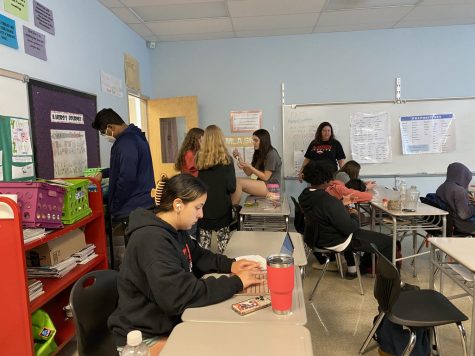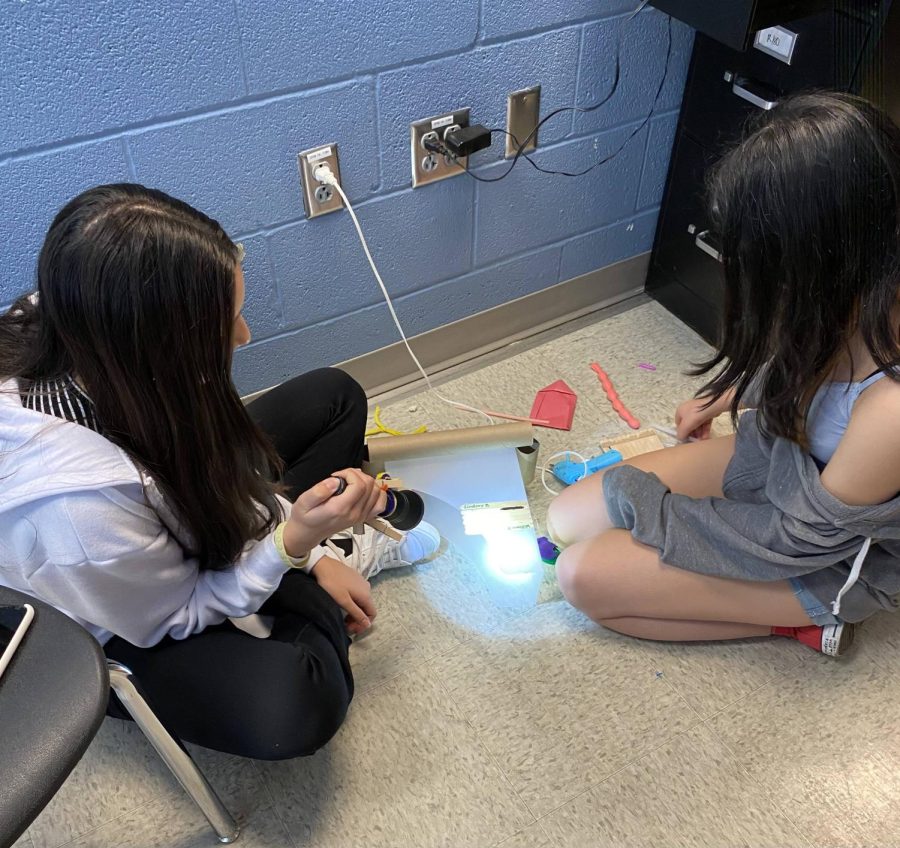Lancer Spotlight 4/24/23: Maker project teaches freshman students problem-solving skills
April 24, 2023
Problem solving is a necessary skill at any age. In fact, the average person learns to use critical thinking skills to create solutions to an issue by the age of 3.
Finding solutions to problems is an act that happens everyday. From learning how to solve any math problem to figuring out what to make for dinner, having the skills to resolve dilemmas is a regularly utilized skill which helps one grow intellectual capacity.
That is why Linganore High School (LHS) English teacher Angela Smith’s second period class is participating in a maker project this year. The maker project is based on the story “The Most Dangerous Game,” in which the main character, Sanger Rainsford, is stuck on an island and must find a means to either escape or beat the antagonist, General Zaroff.
Smith discussed the idea behind the project.
“So, I found out a lot of times students give up rather than finding multiple solutions to a problem, like they fail one time and they just stop,” said Smith. “The idea [behind the project] is for them … [to] fail more than one time and try things different ways before they come up with a solution.”
Students in Smith’s class were required to try and help Rainsford either 1) find a way off the island or 2) beat Zaroff. The students did not disappoint with their many brilliant ideas.
Many of the students thought the best idea would be to fight off Zaroff, while others took to making inventions such as boats in the hopes of escaping. However, others, such as freshman Chloe Roberts, thought the best way to take down the antagonist would be by trapping Zaroff.
“We created a ‘Man Trap,’” said Roberts. “Zaroff will fall through [sticks and leaves made of pipe cleaners] and into the quicksand.”
The students’ projects ranged from simple innovations, similar to mouse traps, to (fake) dangerous weapons, such as flame throwers. The students were all very immersed in the creation of their survival inventions, with all objects made from basic, everyday items such as straws, shoe boxes and even water.
Some students, such as freshmen, Robert Helm and Nicholas Hill, even incorporated real-life survival strategies and turned them into classroom-friendly projects.
“We are making a smoke thing [campfire], so it shoots smoke in the air so that somebody could see it [and it] helps detect the person,” said Helm.
This specific strategy has been used countless times by actual people who are stranded to get the attention of airplanes and ships so they can be rescued. The usage of this technique is recommended by many survival experts such as Tom Williams who says that fire is a part of the “five pillars of survival.”
Another example of these creative inventions belongs to Daniela Castellanos and Emily Maya, who came up with the idea of building a reflective base with a mirror and a flashlight.
“We are making a reflective base so that Rainford can send a light into the sky so people know that he is there, and he needs to get help,” said Maya.
Students worked on their projects for multiple days, and on the final day, they presented their survival strategies to the rest of the class.
A simple design created by freshmen Collin Doyle and Ryland Kirk had one of the most effective strategies, even with

the small size of their invention.
Doyle and Kirk created a slingshot that allowed a sparkler to be projected through the air–although, for the project’s demonstration, that sparkler was not lighted. All that was needed was for someone to pull back on the invention and let go, shooting the sparkler into the air.
Smith was so impressed, she insisted that the class test the invention outside in the coming week.
Linganore Assistant Principal Marcus Allen visited Smith’s class to see the maker space creations.
“Each student addressed the problem differently, and I enjoyed the solution that they presented,” Allen said. “There was a guy who did like a slingshot that shot toothpicks.”
Overall Smith’s idea to get students thinking critically as they engaged with the material was successful.



